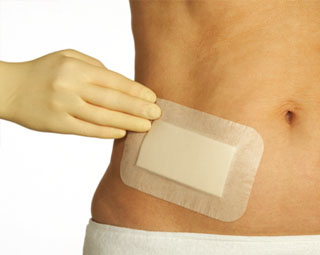Know more about Plasters
First-aid dressings are the first line of defense in controlling the spread of infectious diseases like a staph infection, the flu, and the common cold. The wound dressing is used to cover the wound to prevent it from drying out, recovery too quickly, or just not healing whatsoever. These products also have particular applications which aren't acceptable for most patients.
In the event of an injury, the first-aid kit is a fantastic choice. But this doesn't mean that the kits should be treated as an afterthought. In fact, one major consideration when buying first-aid supplies is whether they are appropriate for your personal situation.
Hospitals and nursing homes use hospital dressing kits primarily to treat burns. In the hospital setting, the focus is on maintaining patient comfort by ensuring that burn victims stay hydrated, receiving pain relief medications, and holding down their temperatures. In this setting, there are a lot of things that are inappropriate for a minor injury. These include alcohol-based first-aid solutions, which don't provide sufficient pain relief and make skin conditions worse.
Wounds which have been covered with a bandage don't typically need an immediate dressing. In the hospital setting, there's often no time to ascertain if the wound is"infectious" or not. Doctors usually prefer to wait until the wound has had a chance to heal and be analyzed for signs of infection.
In a home environment, it's ideal to adhere to the same"two-step" procedure in assessing wounds. At home, the first step is to determine if the wound is currently"infectious." If it is, the patient may be given antibiotic therapy prior to the dressing or topical anesthetic is used.

Non-infectious wounds need nothing more than cleanliness. Toilet breaks should be watched for signs of redness, oozing, or discharge. This is just a normal part of the recovery process.
Once the wound has been assessed and determined to be non-infectious, the next step is to determine which kind of dressing is appropriate. There are two primary types of wound dressings: wet and dry. For internal injuries, dry dressing may be used, but for external wounds, moist dressing is used.
Wet dressings are sterile and dry and must be administered immediately once a wound is noticed. They are often employed to bandaged wounds, though they can also be used for some minor cuts. Other aspects to consider are the location of the wound, the severity of the injury, and the type of dressings that are appropriate.
First-aid and crisis first-aid supplies are available from local pharmacies and medical supply stores. Hospitals frequently have a first-aid box in the lobby where an employee may place an order. Local pharmacies also stock lots of first-aid products. Both these locations offer different products, so it is important to shop around and choose what you need according to your own situation.
Although the main criteria for choosing these supplies will be to save money, it is also important to do so for convenience. First-aid and emergency supplies should be readily available, regardless of where they are located. In a busy hospital, not all departments may have access to the supplies. And at home, finding what you need isn't always easy, especially when an injury occurs that involves injuries that are complex or sensitive.
Online, you'll find a variety of first-aid kits that are made available in bulk or by the box. Online manufacturers will offer kits of varying sizes, so it's important to pick the size of apparel that will work for your requirements. Although a physician may have similar kits available, the kits may vary depending on what state you reside in. In addition, some kits contain other things which aren't needed for each patient, such as adhesive bandages. This could be a waste of money if your kit only contains a sterile dressing.
Medical dressings are easily available at any pharmacy and at a medical supply store. They are especially helpful for the tiny injuries that don't require a second opinion. Operation and that are readily cleaned and disinfected with water and soap.
For more details about Compression Hosiery please visit webpage: click for info.
